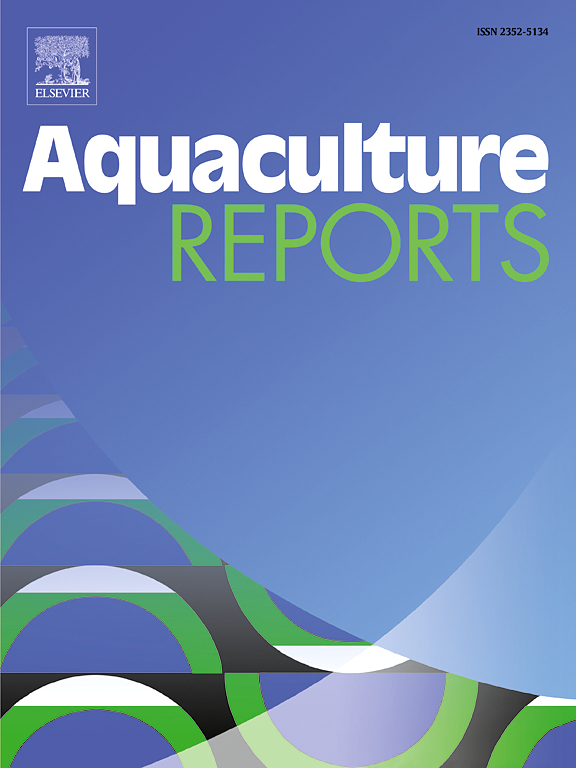Effect of dietary quercetin supplementation on high-starch diet-induced growth impairment, metabolic dysregulation, and oxidative stress in largemouth bass (Micropterus salmoides)
IF 3.2
2区 农林科学
Q1 FISHERIES
引用次数: 0
Abstract
High-starch diets disrupt glucose and lipid metabolism in fish, which in turn leads to impaired liver function and growth. Although quercetin has been shown to reduce blood glucose and cholesterol levels in mammals, its role in aquaculture fish remains poorly understood. To address this knowledge gap, five experimental diets were formulated: LS (8 % starch without quercetin), HS (16 % starch without quercetin), HSQ200 (16 % starch with 0.02 % quercetin), HSQ400 (16 % starch with 0.04 % quercetin), and HSQ800 (16 % starch with 0.08 % quercetin). Juvenile largemouth bass (initial weight: 10.02 ± 0.05 g) were fed respective diets for 10 weeks. Compared with the LS group, the HS group exhibited significant growth inhibition and liver damage. Notably, quercetin supplementation significantly improved weight gain (WG), specific growth rate (SGR), and protein efficiency ratios (PER); reduced blood glucose, serum triglycerides (TG), total cholesterol (TC), low-density lipoprotein cholesterol (LDL-C), and liver enzyme activities (AST and ALT). Mechanically, quercetin decreased liver glycogen levels by upregulating genes related to glucose metabolism (g6pc1a, pfkla, and slc2a1b). It also reduced liver TG, TC, and lipid content by downregulating lipid metabolism-related genes (fasn, acaca, cd36, and fabp4a). Furthermore, quercetin lowered reactive oxygen species (ROS) levels by upregulating antioxidant genes (cat, gpx7, sod1), enhancing antioxidant enzyme activity, and alleviating oxidative stress. These findings demonstrate that, quercetin protects against high-starch-induced liver injury through multiple pathways involving oxidative stress and metabolism. For optimal growth performance and hepatoprotection, dietary supplementation with 400 mg/kg quercetin is recommended in a high-starch diet for largemouth bass.
求助全文
约1分钟内获得全文
求助全文
来源期刊

Aquaculture Reports
Agricultural and Biological Sciences-Animal Science and Zoology
CiteScore
5.90
自引率
8.10%
发文量
469
审稿时长
77 days
期刊介绍:
Aquaculture Reports will publish original research papers and reviews documenting outstanding science with a regional context and focus, answering the need for high quality information on novel species, systems and regions in emerging areas of aquaculture research and development, such as integrated multi-trophic aquaculture, urban aquaculture, ornamental, unfed aquaculture, offshore aquaculture and others. Papers having industry research as priority and encompassing product development research or current industry practice are encouraged.
 求助内容:
求助内容: 应助结果提醒方式:
应助结果提醒方式:


